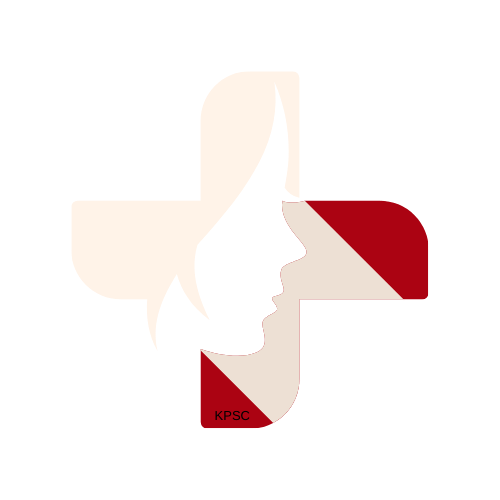Best Tip Rhinoplasty Clinics in Seoul | Cost & Guide
Restore your nose’s form, function, and confidence.
Tip rhinoplasty is a specialized cosmetic procedure that focuses on reshaping and refining the tip of the nose. Whether your concerns are aesthetic or functional, our expert team in Seoul is here to deliver natural-looking and long-lasting results.
Why Is Tip Rhinoplasty Performed?
- Refining the Nasal Tip
The most common reason for tip rhinoplasty is dissatisfaction with the shape, size, or projection of the nose tip. This can involve reducing a bulbous, wide, or asymmetrical tip, or increasing projection for a more defined, balanced appearance. - Correcting Asymmetry
Some individuals have an asymmetrical nasal tip, where one side is higher, wider, or differently shaped than the other. Tip rhinoplasty can restore balance and symmetry to the nasal tip, creating a more harmonious look. - Improving Nasal Function
In some cases, the nasal tip may obstruct airflow or create breathing issues. Tip rhinoplasty can address structural issues by improving the tip’s alignment or addressing issues with nasal valves, improving both function and appearance. - Achieving Better Proportions
Tip rhinoplasty helps ensure that the nose tip is in proportion with the rest of the face, especially when combined with other rhinoplasty techniques to address the entire nasal structure.
Benefits of Tip Rhinoplasty
- Improved Tip Shape: Refine the size, projection, and symmetry of the nasal tip for a more defined and aesthetically pleasing appearance.
- Minimal Scarring: Tip rhinoplasty generally involves minimal incisions and leaves no visible scars, making it a less invasive option compared to traditional rhinoplasty.
- Natural Results: The procedure enhances the natural beauty of the nose, providing results that blend seamlessly with your facial features.
- Increased Confidence: Many patients report feeling more confident and comfortable with their appearance after tip rhinoplasty, as it creates a nose that suits their facial proportions.
- Quick Recovery: Tip rhinoplasty typically has a shorter recovery time compared to full rhinoplasty, allowing you to return to light activities within a week or two.
What to Expect During the Procedure
Tip rhinoplasty is usually performed under general anesthesia or local anesthesia with sedation, depending on the complexity of the procedure and the patient's preference. The surgery typically lasts between 30 minutes to 1.5 hours, depending on the extent of the reshaping needed.
Key Steps of the Tip Rhinoplasty Procedure:
- Consultation & Planning
During your consultation, the surgeon will assess the shape and structure of your nose, especially the tip. They will discuss your aesthetic goals, preferences, and any concerns you have about your nasal tip to create a personalized treatment plan. - Incision Placement
Tip rhinoplasty can be performed using open rhinoplasty or closed rhinoplasty techniques: - Open Rhinoplasty: A small incision is made across the columella (the tissue between the nostrils), allowing the surgeon to access the nasal tip and make precise changes.
- Closed Rhinoplasty: All incisions are made inside the nostrils, leaving no visible scarring, and the surgeon reshapes the tip through these incisions.
- Reshaping the Nasal Tip
The surgeon may remove or sculpt the cartilage to refine the shape of the nasal tip. In some cases, cartilage grafts may be used to enhance projection or definition. The goal is to create a more refined, symmetrical, and balanced appearance that aligns with your facial features. - Closure & Dressing
Once the reshaping is complete, the incisions are carefully closed with fine sutures, and a nasal splint or bandage is applied to support the nose during the healing process.
Tip rhinoplasty typically takes less time than full rhinoplasty and is often performed on an outpatient basis, meaning you can return home the same day.
Recovery & Aftercare
Recovery from tip rhinoplasty is relatively quick compared to full rhinoplasty, with most patients resuming light activities within a few days. Here’s what you can expect:
- Recovery Time: Most patients can return to work or light activities within 1 to 2 weeks. However, strenuous activities and exercise should be avoided for at least 4 to 6 weeks to allow the nose to heal properly.
- Swelling and Bruising: Mild swelling and bruising around the nose and eyes are common after surgery but typically subside within 1 to 2 weeks.
- Nasal Splint or Bandages: A nasal splint may be applied to support the newly shaped nasal tip during the initial healing phase.
- Follow-up Appointments: You will need to attend follow-up appointments to monitor the healing process and ensure the nose is healing as expected.
- Final Results in 3 to 6 Months: The final results of tip rhinoplasty will be fully visible once the swelling resolves, usually after 3 to 6 months.
By following post-operative care instructions and attending follow-up visits, you can ensure the best possible outcome.
Cost of Tip Rhinoplasty in Korea
The cost of tip rhinoplasty in Korea can vary depending on several factors, such as the complexity of the procedure, the surgeon’s expertise, and the clinic’s location. On average, the cost for tip rhinoplasty in Korea ranges from:
- Tip Rhinoplasty Surgery: ₩2,500,000 – ₩6,000,000 KRW (Approx. $2,000 – $4,800 USD)
- Consultation Fee: ₩50,000 – ₩100,000 KRW (Approx. $40 – $80 USD)
- Post-Surgery Care & Follow-up: Additional costs may apply depending on follow-up care, medications, and post-surgical garments.
It’s essential to consult with a qualified surgeon to receive an accurate estimate based on your individual needs.
Schedule Your Consultation
If you're considering tip rhinoplasty in Seoul, our experienced surgeons are here to guide you every step of the way. Schedule a consultation today and discover how expert tip rhinoplasty can enhance your facial harmony with confidence.
Transform Your Confidence
Experience personalized care and exceptional results with our board-certified plastic surgeons.
Contact Us
We will get back to you as soon as possible.
Please try again later.

